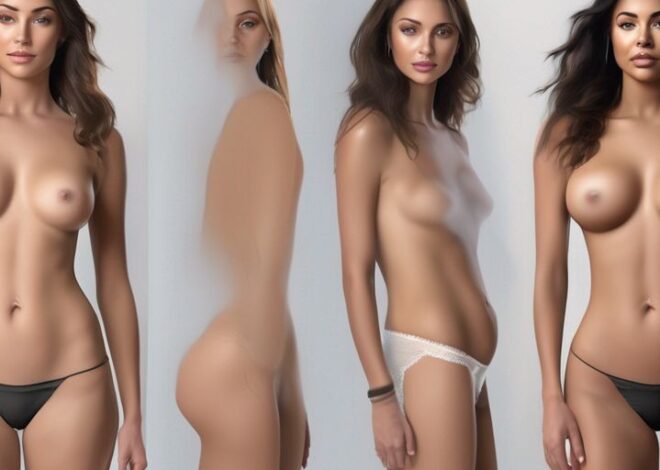
The Ethical Dilemmas of Using AI to Undress Images: Nudity and Privacy at Stake
The proliferation of AI technologies capable of generating nudity from images, such as the advanced 2024 web-application Nudify.Online, presents a complex array of ethical, legal, and social dilemmas. This article delves into the multifaceted issues surrounding the use of AI to undress images, examining the implications for privacy, legality, and societal norms.
Key Takeaways
- Understanding AI’s capability to generate nudity highlights critical ethical and privacy concerns, necessitating stringent guidelines and public awareness.
- Legal frameworks lag behind technological advancements, posing challenges in protecting individuals’ rights in digital spaces.
- The social and cultural ramifications of AI-generated nudity are profound, affecting social norms, body image, and interpersonal trust.
- Victims of non-consensual image alterations suffer significant psychological effects, underscoring the need for effective legal remedies and support systems.
- Future developments in AI should prioritize privacy preservation and ethical standards to balance innovation with individual rights protection.
Understanding the Technology Behind AI-Driven Nudity Generation

How AI Identifies and Processes Clothing in Images
AI-driven nudity generation technologies utilize complex algorithms to identify and process clothing in images. These systems are trained on vast datasets of clothed and unclothed images to accurately distinguish different types of garments and the human body’s contours beneath them. Key to this process is the AI’s ability to segment images into discernible layers and textures.
The Role of Machine Learning in Image Modification
Machine learning models are central to modifying images to generate nudity artificially. These models learn from numerous examples to apply realistic textures and skin tones, ensuring the alterations are seamless and difficult to detect. Techniques such as Generative Adversarial Networks (GANs) are often employed to enhance the realism of these modifications.
Ethical Design Considerations in AI Development
The development of AI technologies that can generate nude images of individuals without their consent poses significant ethical challenges. It is crucial for developers to implement safeguards that prevent misuse and ensure that these technologies are used responsibly. A focus on ethical design from the outset can help mitigate potential harms associated with AI-driven nudity generation.
Legal Implications of Using AI to Generate Nude Images

Privacy Laws and Digital Consent
In the digital age, the intersection of AI and privacy laws becomes increasingly complex. The unauthorized use of AI to generate nude images without explicit consent can lead to severe legal consequences. This is particularly relevant in jurisdictions with stringent digital privacy regulations. For instance, the General Data Protection Regulation (GDPR) in the EU provides individuals with the right to control their personal data, which includes their digital representations.
Intellectual Property Concerns
AI-generated images that use someone’s likeness without permission raise significant intellectual property issues. This not only infringes on personal rights but also on the rights of photographers and original content creators. The legal landscape here remains murky, as existing laws may not directly address the nuances of AI-generated content.
Jurisdiction and Enforcement Challenges
Enforcing privacy and intellectual property laws across different jurisdictions poses a significant challenge. The global nature of the internet means that AI-generated nude images can be created and distributed from anywhere, complicating legal enforcement. Effective international cooperation and harmonization of laws are crucial to address these challenges.
Social and Cultural Impact of AI-Generated Nudity

Influence on Social Norms and Body Image
The advent of AI technologies like Nudify.Online has significantly altered social norms around privacy and body image. The ease with which images can be manipulated to undress individuals without consent has led to a normalization of digital nudity, impacting societal views on modesty and personal boundaries.
Potential for Misuse and Abuse
The potential for misuse of AI in generating non-consensual nudity is alarmingly high. This technology can be exploited to harass, blackmail, or publicly shame individuals, leading to severe social and psychological repercussions.
Impact on Relationships and Trust
The use of AI to generate nude images can severely undermine trust in relationships. Partners may feel betrayed or violated if their images are altered without consent, leading to breakdowns in communication and trust. This technology poses a significant threat to the integrity of personal and professional relationships.
The Psychological Effects on Victims of Non-consensual Image Alteration

Mental Health Consequences
The unauthorized alteration of images to depict nudity can lead to severe mental health issues for the victims. Victims often experience intense feelings of violation and loss of control, which can manifest as anxiety, depression, and even post-traumatic stress disorder (PTSD). The stigma associated with nudity and the public exposure of such images exacerbate these effects, making recovery a challenging process.
The Role of Support Networks and Counseling
Support networks, both formal and informal, play a crucial role in the recovery of victims. Counseling services, peer support groups, and online forums can provide the necessary emotional and psychological support. These networks help victims process their experiences, rebuild their self-esteem, and regain a sense of normalcy in their lives.
Legal Recourse for Victims
Victims of non-consensual image alteration have various legal avenues to seek justice and compensation. The legal framework often includes laws against cyber harassment, digital abuse, and privacy violations. However, the effectiveness of these laws can vary significantly based on jurisdiction and the specific circumstances of each case.
Technological Countermeasures and User Protection

AI Detection Tools for Altered Images
With the rise of AI technologies capable of altering images, the development of AI detection tools has become crucial. These tools utilize advanced algorithms to identify discrepancies and anomalies that suggest manipulation, providing a first line of defense against non-consensual image alterations.
Educating Users About Digital Safety
Educating users on digital safety is essential in mitigating risks associated with AI-generated nudity. Awareness programs should focus on recognizing altered images and understanding the potential harms of sharing personal photos online.
Implementing Robust Security Measures
To protect users from the misuse of their images, robust security measures must be implemented. This includes encryption, secure data storage, and regular updates to security protocols to keep pace with evolving technological threats.
The Role of Ethics in AI Development and Application

Establishing Ethical Guidelines for AI Use
Ethical guidelines are crucial in shaping the development and deployment of AI technologies. They ensure that AI systems are designed and operated in a way that respects human rights and dignity. The creation of comprehensive ethical standards can help mitigate risks associated with AI, such as bias and discrimination.
Responsibility of AI Developers and Companies
AI developers and companies hold significant power in determining how AI technologies impact society. It is their responsibility to integrate ethical considerations into their practices, ensuring that AI systems do not harm users or society at large. This includes rigorous testing and transparency in AI operations.
Public Awareness and Ethical Education
Increasing public awareness and education about AI ethics is essential for fostering an informed user base. Educating the public about the potential risks and ethical considerations of AI can lead to more conscientious use and demand for ethical AI practices.
Future Directions in AI and Privacy Preservation

Advancements in AI for Enhancing Privacy
The continuous evolution of AI technologies promises significant advancements in privacy preservation. Predictive algorithms and encryption methods are becoming more sophisticated, aiming to protect user data from unauthorized access and breaches. Future AI systems are expected to be more transparent and controllable by users, enhancing trust and security.
Balancing Innovation with Ethical Standards
As AI capabilities expand, the challenge of balancing technological innovation with ethical standards becomes crucial. Developers and regulators must work together to ensure that AI advancements do not compromise privacy or ethical norms. This balance is necessary to foster public trust and facilitate the responsible integration of AI into society.
Predictions for Future Legal and Ethical Debates
The landscape of legal and ethical debates surrounding AI is set to evolve. As AI technologies become more pervasive, new regulations will likely be introduced to address the complex issues of digital consent and privacy. Stakeholders must remain vigilant and proactive in shaping these debates to safeguard individual rights and promote ethical AI usage.
Conclusion
The ethical implications of using AI technologies like Nudify.Online to undress images are profound and multifaceted. While the technology showcases impressive advancements in AI capabilities, it raises serious concerns about privacy, consent, and the potential for misuse. As we navigate this complex landscape, it is crucial to establish stringent ethical guidelines and legal frameworks to protect individuals’ rights and maintain societal norms. The balance between technological innovation and ethical responsibility must be carefully managed to ensure that such powerful tools do not harm or exploit vulnerable populations.
Frequently Asked Questions
What is Nudify.Online?
Nudify.Online is a web-application that uses advanced AI technology to digitally remove clothing from images of people. It represents the cutting-edge of AI capabilities in image modification as of 2024.
How does AI identify and process clothing in images?
AI uses machine learning algorithms to detect patterns and textures that resemble clothing in images. It then processes these areas to simulate what the person might look like without clothes, based on data it has learned from training sets.
Is it legal to use AI to generate nude images?
The legality of using AI to generate nude images depends on the jurisdiction and specific laws regarding privacy, consent, and digital manipulation. Users must consider legal implications and potential violations of privacy laws.
What are the ethical concerns with AI-generated nudity?
Ethical concerns include the potential for invasion of privacy, misuse of images without consent, and the impact on social norms and personal relationships. It raises questions about the responsible use of technology and the protection of individual rights.
Are there any protections against non-consensually altered images?
Yes, there are technological countermeasures such as AI detection tools that can identify altered images. Additionally, legal recourse may be available for victims, and there are calls for stricter regulations and ethical guidelines in AI development.
What can be done to prevent abuse of AI nudity generation technologies?
Preventing abuse requires a combination of robust security measures, public education on digital safety, and ethical guidelines for AI development. Developers and companies have a responsibility to implement safeguards and ensure their technologies are used responsibly.



